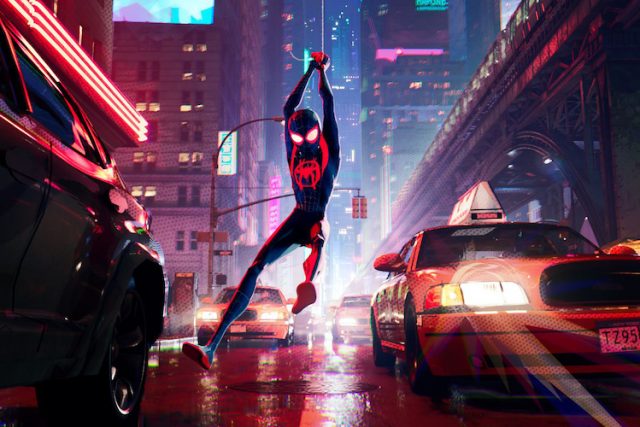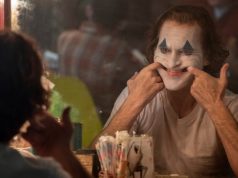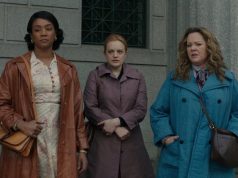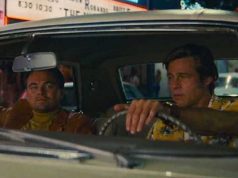
There were two excellent Spider-Man movies in the early 2000s, followed by a mediocre one, a mediocre reboot, and a mediocre sequel to that reboot. Last year’s reboot, “Spider-Man: Homecoming,” balanced the scales — three great, three not — and our adhesive friend’s reputation is fully restored with “Spider-Man: Into the Spider-Verse.” Now the great Spidey movies outnumber the forgettable ones! And surprisingly, I no longer think they should quit while they’re ahead.
This is no reboot, either, but a sequel to all of the previous entries — yes, even the Andrew Garfield ones, which canceled out the Tobey Maguire ones. Those all happened, just in different parallel universes. “Into the Spider-Verse” is set in one of those alternate dimensions, slightly different from ours in purely cosmetic ways (the NYPD is called the PDNY), with biracial Brooklyn middle-schooler Miles Morales (voice of Shameik Moore) admiring local hero Spider-Man (Chris Pine) before being bitten by a radioactive spider himself. Miles tries to take over the job when Spider-Man is incapacitated by the Kingpin (Liev Schreiber), but his powers are new and unstable. Besides, he’s just a kid, with no real desire to stand out or be different.
The Kingpin, working on some cockamamie scheme, has a particle accelerator that the first Spider-Man was trying to deactivate when he was knocked out of commission. As he feared, the device opens portals to other dimensions, and soon Miles is joined by several other Spider-Persons, each from a different plane of reality. There’s Peter B. Parker (Jake Johnson), in his late 30s, tired, paunchy, divorced from Mary Jane; Gwen Stacy (Hailee Steinfeld), aka Spider-Woman; Peni Parker (Kimiko Glenn), an anime girl from the future who has a big robot spider assisting her; Spider-Noir (Nicolas Cage), a black-and-white Peter Parker from the ’30s who’s a gumshoe by day, webslinger by night; and Spider-Ham (John Mulaney), a cartoon pig version of Spider-Man. (The whole movie is a cartoon to us, of course, but Spider-Ham is a cartoon to them.) Together, they have to stop Kingpin — who’s in cahoots with Doc Ock (Kathryn Hahn) — and send everybody back to their respective universes, lest they cease to exist.
A significant portion of the story is about the jaded Spidey showing the new kid the ropes, giving him on-the-job training while seeming bored with the whole thing. (He’s been doing this for so long, and is so familiar with the tropes of his profession, that he knows what a villain is going to say before he says it.) This dynamic is funny and endearing, the older Spider-Man warming up to the younger one, the younger one trying to understand how to use his powers while staying under the radar of his police officer father (Brian Tyree Henry), who hates vigilantes like Spider-Man. All of the Spider-Persons, being the only ones with powers in their home worlds, are awestruck and comforted to learn that there are others like them.
The movie’s messages are twofold: No matter how different you are, you’re not alone; and even an ordinary person can be a hero. It’s important for kids to hear that, and the PG-rated “Into the Spider-Verse” is aimed at a young audience. But the screenplay, by Phil Lord (“Cloudy with a Chance of Meatballs,” the LEGO movies) and Rodney Rothman (“22 Jump Street”), is smart, funny, and mature, treating viewers with respect rather than pandering to them. The film lightly deconstructs superhero myths without becoming a full-on meta-commentary, the trio of directors (Rothman, plus animators Bob Persichetti and Peter Ramsey) focused on creating high-flying comic-book adventures that lead to surprisingly tender emotions. It’s a plucky movie that hits the Oz trifecta — heart, brains, and courage — and leaves the portal open for more inter-dimensional hijinks to follow. I, for one, welcome our new spider overlords.
* * *
A few words on the movie’s look. The artwork and animation are bold and surprising, often stunning to behold — beautifully stylized one moment, almost photo-realistic the next. The images have a textured feel, like pulpy newsprint, composed of colored dots like old comics, but the action is exhilaratingly fluid and decidedly not old-fashioned. At the same time, it takes some getting used to, as part of the style is for objects in the background (and sometimes the foreground) are rendered with double images, so it’s like looking at a 3D movie without the glasses. This is done to direct the viewer’s eye to the part of the screen that’s important, but it kept making me blink and look again at the background, trying to sharpen it up. It was a while before my brain accepted that it’s supposed to look like that.
A- (1 hr., 57 min.; )





